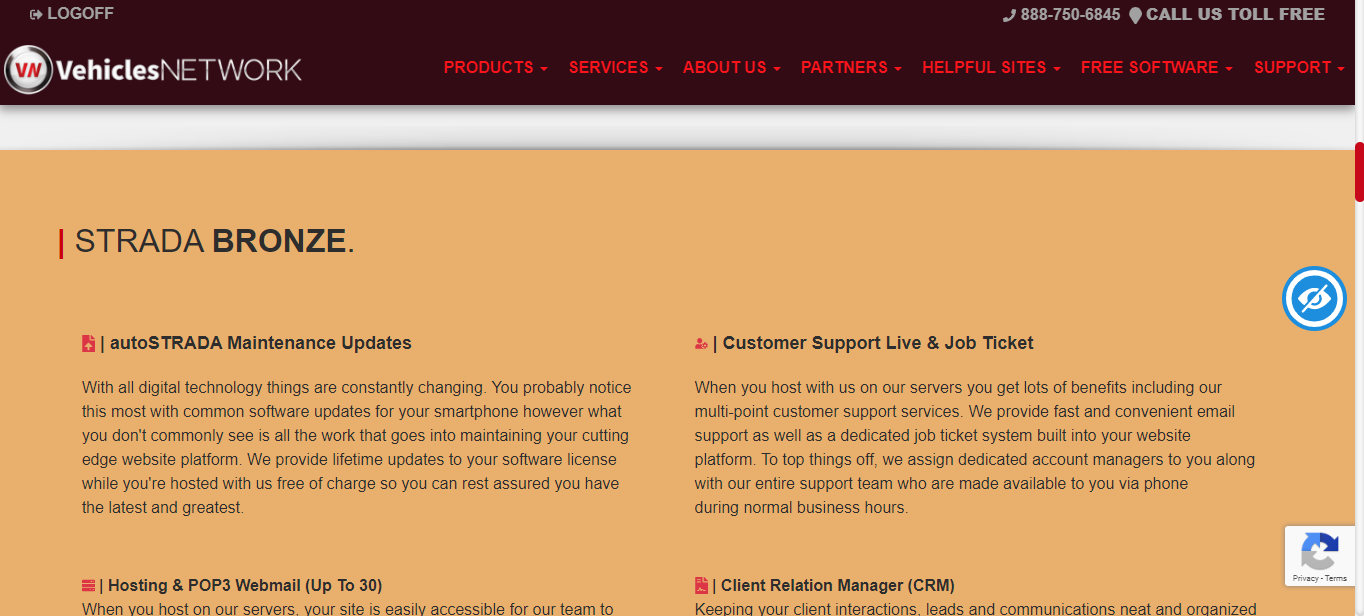
Website content is about more than using keywords and appealing to the search engines. Your text needs to appeal to users, and will be a major factor in converting visitors into customers.
No matter how many visitors you bring to your website, it means nothing if your website doesn’t convert well. Converting visitors into leads is done through Conversion Optimization.
Conversion optimization, or conversion rate optimization (CRO) is a system for increasing the percentage of visitors to a website that convert into customers. There are many components, from color choices to font types, that play a role in getting people to surrender their prized personal information.
One major part of conversion optimization is having great website content. One thing I notice many customers neglect is their website copy. Taking the time to write high-converting copy for your dealership website will increase your conversions and get you more leads.
What you need to know to write killer website content for your auto dealership:
1. Focus on your headers.
The truth is, most people don’t read all the content on your page. Their goal is to find what they’re looking for as quickly as possible. They’re not here to read a novel. They want info, and they want it fast.
Well-written headers are the first step in helping people find what they need fast.
How do you write great headers?
Headers should be descriptive.
Don’t get too clever with your headers. You don’t want to risk confusing your visitors. Each header should be a good summary of the content below the header. You can include power words, or words that will grab attention. But they should be easy to read quickly, and not too long.
Top-selling Vehicles.
Special Offers and Promotions.
These short headers will grab attention and tell visitors right away what that section of content is all about, and whether they’re interested in reading further.
Headers should tell the entire story.
Visitors to your website should be able to summarize the content on your website JUST FROM READING YOUR HEADERS. Don’t make them read the small print if they don’t want to. Write headers that can tell the entire story of your website. The paragraphs between the headers should only elaborate on the story your headers are summarizing.
For example, if you’re writing an About page for your dealership, just hit the high points in your headers:
Who is ABC Dealership
How ABC Dealerhips is making a difference in your local community
Why buy from ABC Dealership?
2. Communicate your Unique Selling Proposition immediately.
What is your unique selling proposition (USP)? A USP is what sets your products or services apart from the competition. Why should a visitor choose your auto dealership over the other options available?
One popular USP you may have seen in use is the concept of doing good. Perhaps you’re running a campaign for every car purchased in that month, a portion of the proceeds goes to a local charity.
Other USPs might include your high rate of customer satisfaction. “Choose the dealership your neighbors love.”
Whatever helps your dealership stand out should be the first thing you’re telling your customers on your homepage.
3. Be a storyteller.
Don’t just write marketing copy. You need to become a storyteller. Just like I said your headers should tell the entire story, your website itself should tell a story.
Let’s go back to our example of donating proceeds to a local charity. Tell the story of why that charity matters to your dealership, and how the money will be used to benefit specific individuals or causes at that charity. This will inspire an emotional response in your website visitors, and I’ll talk more about emotional buying later in this article.
4. Focus on the Why, not the What.
When writing your content, you shouldn’t tell visitors what is so amazing about your dealership. Tell them how you are going to solve their problem, or make their life better.
People don’t want to buy ¼ inch drill bits.
They want ¼ inch holes.
People don’t want to buy great smelling laundry detergent.
They want great-smelling clothes.
Your visitors don’t want to buy a car. They want to improve their status, have a reliable vehicle, and be able to afford a car they love.
Your content should tell them how their life is going to be better if they take action on your website.
5. Be brief.
Having a lot of content isn’t a bad thing. In fact, many SEOs will tell you that more content, regularly updated is better for ranking higher in search results. When I say “be brief”, I mean your headers should be short, and your paragraphs tiny and easy to skim.
Make it simple for people to find what they’re looking for, then skim it, or read it in more detail. Lots of headers, small paragraphs, bold sections, and variations in font size are all ways you can help the reader find the information they are looking for quickly by skimming.
For example, let’s consider the content-rich Services page on the VehiclesNetwork website. There is a lot of content on this page, describing the AutoBAHN continuation plans. The bolded headers, numerous paragraphs, and red highlighted text all help to direct the reader’s attention.
Remember, the better your content is organized, the better it will look on a mobile device. Long paragraphs can be very overwhelming on a small screen, and wordy headers take up a lot of space.
6. Use lots of white space.
If you look at the example above, what is something else you notice about my content? Notice where it isn’t. It doesn’t fill the page. When people are trying to absorb information, their eyes need a place to rest. Plenty of white space, or blank space (that is bronze in the example above), on your web pages will help visitors feel less anxious about reading your content. It makes the page easier to skim, and the content easier to comprehend.
It will also look less overwhelming overall, which means they will stay on the page longer and be more likely to attempt to read it.
7. It’s ok to get personal.
The more personable the content on your site, the more people are going to trust it. Let your personality show through your content. If it doesn’t make sense to tie your personal branding to your site (or you’re writing content for someone else), then create a company persona and stick to it with your writing “voice”.
When we talk about a voice as writers, each person has a certain tone that comes through in their writing. If you’ve been reading my blog for a long time, you may have become familiar with mine. (Yes, I tend to write too long of sentences, overuse commas, and always write in threes, like I just did here). But a little idiosyncrasy is ok, as long as it helps you to better connect with your audience.
Many of our clients do a great job in connecting the personal brand of the owner with dealership, and that helps to give it a persona. Capitalize on this by writing text that will relate to your audience on a more personal level.
8. Where to put content on your website
Wondering what should go where?
Sometimes knowing what content should go on the homepage, and what to relegate to the depths of your interior pages can be difficult.
I’m going to give you the most hated answer – because it really isn’t an answer: It depends on you. What is the goal of your website? For most auto dealerships, the goal is to get more leads for their sales staff.
How can you do that?
On your homepage, the most frequent entrance page to page of most websites, you should include your USP at the top, a Call to Action (like learning more about a vehicle), and access to more content. Get them to take action right away. If they’re not ready, keep them on the website as long as possible to increase the chance of a conversion.
Show snippets of your most popular blogs, your best-selling products, or recognizable brand testimonials.
If we go back to the example I used in #s 1 and 2, our Charitable Campaign, you probably want to have a link to a page that goes into detail about the amazing things you’re doing with the charity. How you’re helping, who you’re helping, etc.
Your homepage is the teaser with a really great call to action, and the rest of your website will lay out the whole story in more detail – About you, Your Vehicles, Resources or Free stuff, Testimonials, Blog, and any other great information you’re sharing. Sometimes behind the scenes stuff can go a long way to building trust in potential customers.
9. Tell visitors what to do.
Don’t be afraid of telling visitors exactly what to do on your website. They might arrive with a goal in mind: “I’m looking for pricing.” Or they might just want to learn more about your business before committing to making a purchase. “What to learn more about us? You can do that here.”
Use the content you’re writing to tell them what step they should take next. "Get a Quote" "Set up a Test Drive"
Our ABC Dealership might tell people: “See how you can make a difference when you purchase this month”, or if you want them to buy: “Browse our top-selling vehicles”.
10. Use emotion to make connections.
This ties into a few of the others points, but I wanted to talk about this by itself. Studies have shown that people make buying decisions, even major ones, by using emotion. Now, we might love when reason matches our emotional choice, but everyone is an emotional buyer.
Images, videos, and other media are great ways to connect emotionally with visitors on your website. But you can use text, too.
Sometimes, we use simple power words like “Now, Instantly” to appeal to the need for immediate gratification in many of us.
Other emotional connections come from personalizing content, appealing to their desire to do good, such as when they know you are supporting a cause.
Conclusion
Writing great content is about telling a story to evoke emotion, getting personal, and formatting the content correctly so it looks appealing to read.



